Latest News Blog
November 2014
112 year old shipwreck of SS Ventnor Finally Found
Monday, 24th November 2014
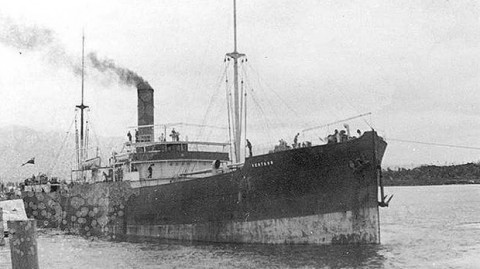
Image supplied by stuff news
The remains of Chinese settlers which were aboard the ship SS Ventnor has finally been found after 112 years!
Chinese settlers came to New Zealand in the 1800's for the gold rush, but not all miners who arrived in New Zealand ever made the planned return trip back to China. Those who died here, were buried in local cemeteries or grave sites near the gold fields which was against Chinese culture. According to Chinese culture, the dead must be returned to their homes so that their families can tend to their souls to help them be at peace. The bought forth the plan for Chinese community members to pool their money together so that the remains of those who had died could be returned.
Unfortunately, the SS Ventnor which was carrying the remains sank off the Hokianga Heads after striking a reef near the coast of Taranaki in October 1902. Since then efforts to recover the shipwreck and the remains has been unsuccessful for the past 112 years, until now.
With the use of an echo-sounder, a remote operated vehicle, and professional underwater divers, the ship was located and had its identity confirmed after a long process which began in 2012.
No remains of the Chinese settlers have been recovered from the ship wreck yet, but other artefacts including plates, a port hole window, and a bell have already been brought to the surface. Their intended recipients will be the Chinese Government. The site where the wreckage has been located has also been classified as a heritage site, and depending on funding there is an aim that more work on the wreck will hopefully bring closure to the descendants from the 512 bodily remains which were aboard the ship.
James Hargest Learn About WWI and the Wakatipu
Thursday, 20th November 2014
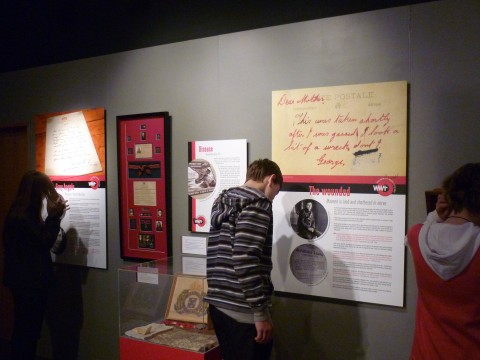
Viewing our WWI and the Wakatipu exhibition
Year 9 students visited the Lakes District Museum & Gallery as part of a fun class outing before the end of the school year. The focus was on having fun as well as a bit of learning on topics the students had already studied throughout 2014 which included WWI and the goldrush.
Their visit included an interactive viewing of our WWI exhibition, a historic walk of Arrowtown to learn about how the war affected a small community, a tour of the Chinese settlement and learning about the gold rush, and then finishing off the visit with gold panning! We also gave the students plenty of time to explore Arrowtown!
Thanks for visiting James Hargest, comment below about your visit to Arrowtown!
Oamaru Intermediate Make a Visit!
Friday, 14th November 2014
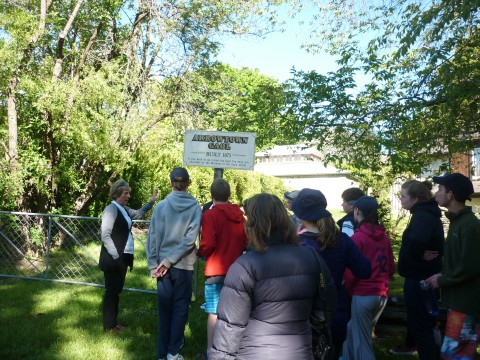
Learning about the Old Gaol on the Historic Walk
Oamaru Intermediate visited us for a morning of fun in Arrowtown!
The mornings activities included:
- A historic walk of Arrowtown
- A tour of the Chinese Settlement
- And gold panning!
These hands on learning experiences helped students understand what it was like for these miners living on the goldfields, and also figure out some of the reasons they made the move to Arrowtown!
The Chinese settlers found it especially hard, as they were invited by the Otago Provincial Government but "not welcome".
Thanks for visiting Oamaru Intermediate, comment below about your visit!
East Taieri Explore History
Wednesday, 12th November 2014
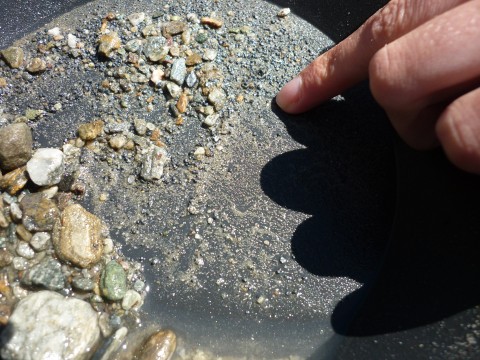
The gold students found were teeny tiny specks of alluvial gold - can you see it?
East Taieri students were very lucky today as they were able to have our Museum Director David Clarke step in to speak to them about the history of Arrowtown in the museum!
As well having the opportunity to hear David speak, the students also had a terrifying lesson with Miss Grey in an 1800's school room and went gold panning at the Arrow River.
These hands on learning experiences really helped students improve their understanding of what life was like in central Otago during the gold rush. Things were pretty tough during the 1800's, students got caned in schools, miners could only travel by walking or riding horses, there was no electricity or indoor plumbing, and finding gold was hard!
What was your favourite activity when you visited the Lakes District Museum?
Do you think life is easier today compared to during the gold rush? Why?
Answer my questions and comment about your visit below.
Thanks for visiting East Taieri School!
WWI and the Wakatipu - Arrowtown School Remembers
Tuesday, 11th November 2014
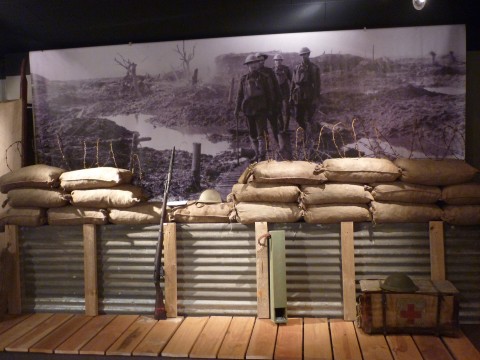
Part of our exhibition includes a recreation of a trench!
Year 7 and 8 students from Arrowtown school have visited the Lakes District Museum to view their posters which have been included as part of our WWI exhibition, and to learn about the effects of war on a small community.
Students really enjoyed checking their measurements to see if they suited requirements for enlisting in 1914. Men had to be at least 64 inches (162.5cm) tall and weigh less than 167.6 pound (76kg). Whilst viewing the exhibition, students completed worksheets which helped them understand the many levels the Wakatipu was involved with war effort which included scheelite mining, women fundraising and enlisting as nurses, and how German citizens living in the region were treated.
The visit was followed with a historic walk of Arrowtown, some of the sites that we visited included:
- The Post and Telegraph Office - mail was the only form of communication between soldiers and their families which could take as long as 7 weeks to be delivered. Everyone in Arrowtown dreaded receiving a telegram which would be delivered by bicycle, as the urgency of the news meant that someone had either been killed in action, was missing in action, or had been seriously injured.
- The Town Hall - farewell parties were hosted for the men who had enlisted, which the whole town would attend including the Arrowtown Mayor. The town hall was also used as fundraising evenings which were organized by the women of the community, to collect money for the Belgian Relief Fund or the Wounded Soldiers Comforts Fund.
- The Arrowtown Pharmacy - which during WWI was the Arrowtown General Store which was owned and operated by the Goodley family. Their son Alexandra Goodley enlisted, and was injured at Gallipoli in his right thigh which lead to his death in 1915.
- The War memorial - 18 names from Arrowtown are listed on this memorial for WWI, which has been built on Soldiers Hill high above Arrowtown. This memorial was built as Arrowtown residents wanted to commemorate those that did not return and to honour their sacrifice.
- The Arrowtown Cemetery - Some soldiers have their names listed on family headstones even though their bodies never were returned from overseas. Charles Eckhardt a German hairdresser who lived in Arrowtown is also buried in the cemetery, he was shunned by the Arrowtown community because of anti-German sentiment during the war.
What did you find most memorable about your visit to the museum?
How do you think the War affected the Wakatipu?
Answer my questions and comment about your visit below!
Thanks for contributing to our exhibition Arrowtown School!















